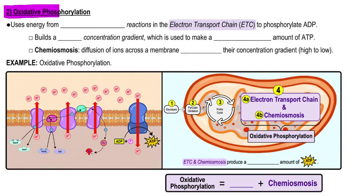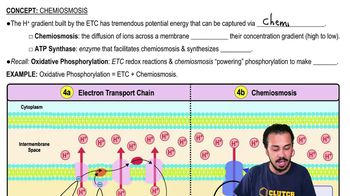Textbook Question
The immediate energy source that drives ATP synthesis by ATP synthase during oxidative phosphorylation is thea. oxidation of glucose and other organic compounds.b. flow of electrons down the electron transport chain.c. H+ concentration gradient across the membrane holding ATP synthase.d. transfer of phosphate to ADP.
3895
views






